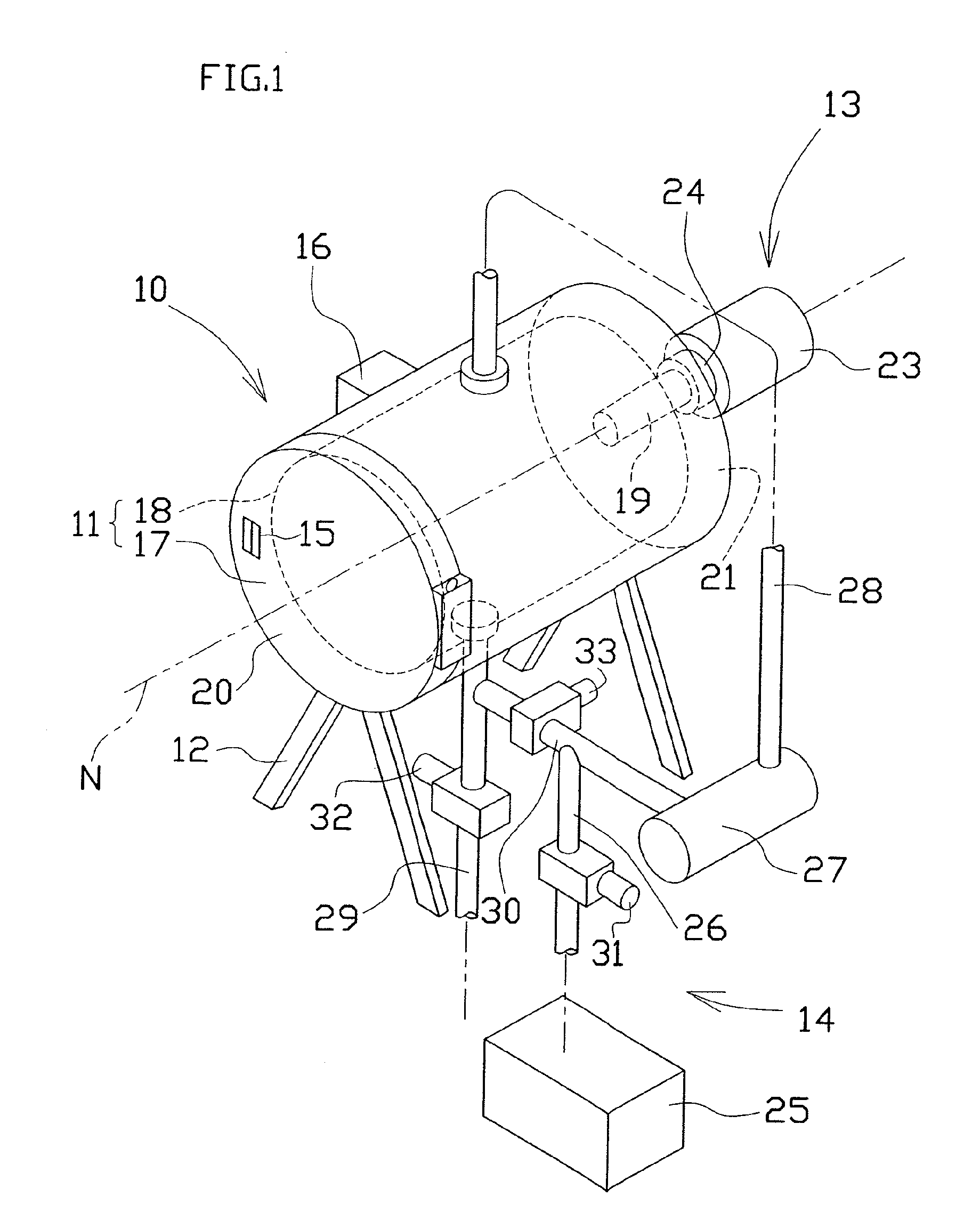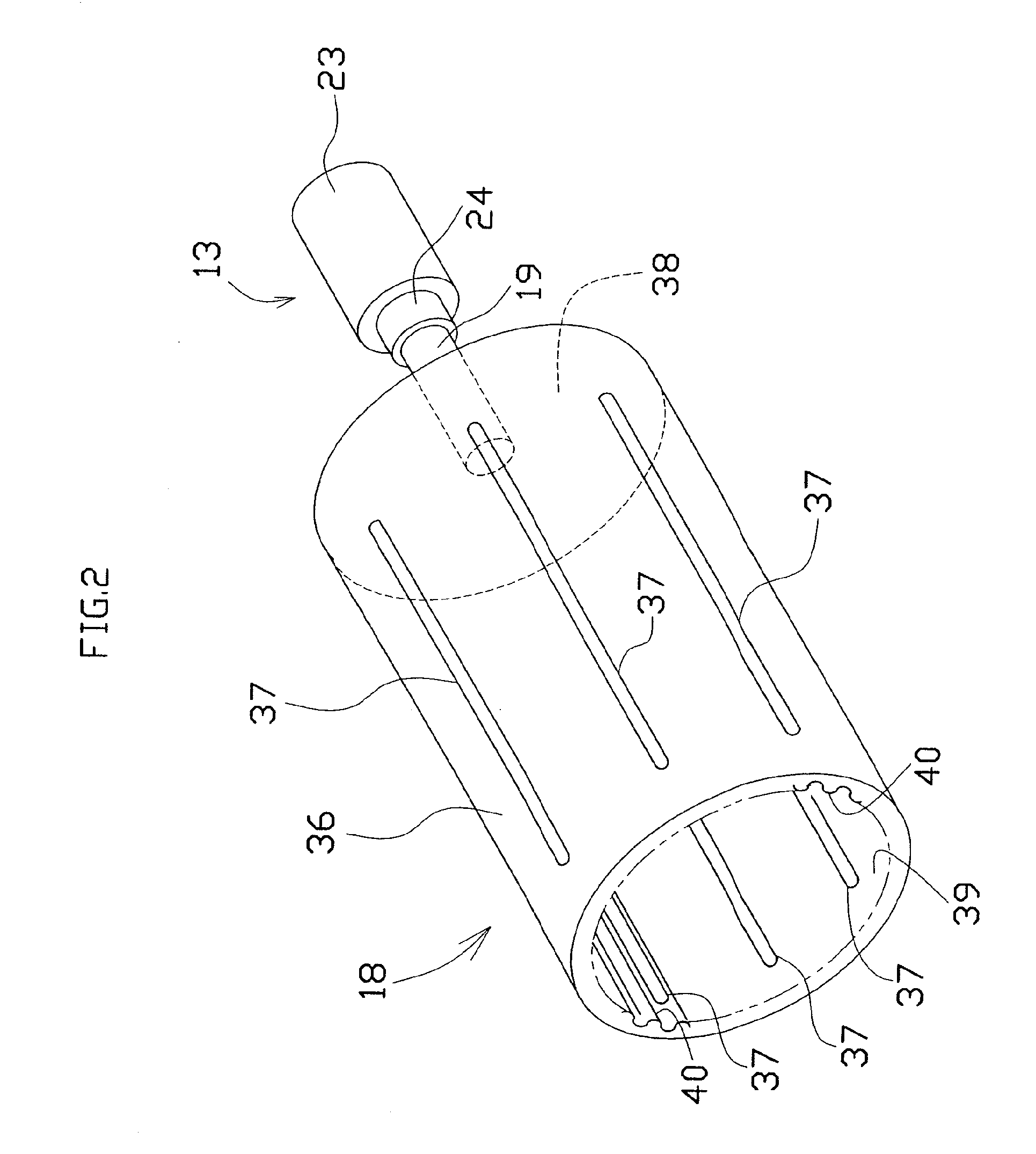Washing method
a washing method and clothes technology, applied in the direction of washing machines with receptacles, textiles and papermaking, other washing machines, etc., can solve the problems of easy damage, easy damage, and easy adhesion of contaminants to clothes, so as to achieve easy damage, easy removal, and reliable removal
- Summary
- Abstract
- Description
- Claims
- Application Information
AI Technical Summary
Benefits of technology
Problems solved by technology
Method used
Image
Examples
example 1
[0099]A drum inner diameter was 340 mm. A drum height ratio was 3%. A rotation direction of the frame body 18 was normal rotation. A rotation period was 60 seconds. A rotation speed of the frame body 18 was changed in the order of 5 rotations per minute, 10 rotations per minute, 60 rotations per minute, and 120 rotations per minute.
example 2
[0100]A drum inner diameter was 340 mm. A drum height ratio was 5%. A rotation direction of the frame body 18 was normal rotation. A rotation period was 60 seconds. A rotation speed of the frame body 18 was changed in the order of 5 rotations per minute, 10 rotations per minute, 60 rotations per minute, and 120 rotations per minute.
example 3
[0101]A drum inner diameter was 340 mm. A drum height ratio was 6%. A rotation direction of the frame body 18 was normal rotation. A rotation period was 60 seconds. A rotation speed of the frame body 18 was changed in the order of 5 rotations per minute, 10 rotations per minute, 60 rotations per minute, and 120 rotations per minute.
PUM
 Login to View More
Login to View More Abstract
Description
Claims
Application Information
 Login to View More
Login to View More - R&D
- Intellectual Property
- Life Sciences
- Materials
- Tech Scout
- Unparalleled Data Quality
- Higher Quality Content
- 60% Fewer Hallucinations
Browse by: Latest US Patents, China's latest patents, Technical Efficacy Thesaurus, Application Domain, Technology Topic, Popular Technical Reports.
© 2025 PatSnap. All rights reserved.Legal|Privacy policy|Modern Slavery Act Transparency Statement|Sitemap|About US| Contact US: help@patsnap.com



